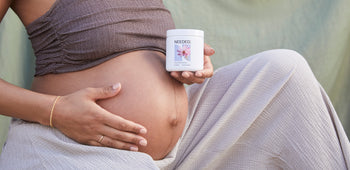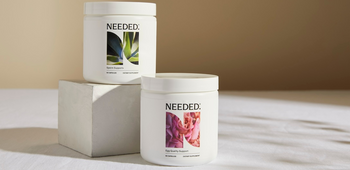Intro
Fertility and Age. Fertility expert Dr. Kalea Wattles, ND, IFMCP unpacks what the data really says.
There’s no doubt about it, women are getting pregnant later in life. In 2021, the birth rate for American women age 35-39 increased 5% from the year 2020. These numbers are more than just statistics; they’re a snapshot of a society where women are rewriting the rules of what it means to be a parent. The last few decades have revealed a trend toward an increasing timeline for building a family, likely driven by advances in reproductive healthcare and evolving cultural perspectives on family and motherhood.
Historically, the term “geriatric pregnancy” was used to describe pregnant women older than age 35. With a growing demographic of women trying to conceive into their 30s, medical professionals have moved toward less stigmatizing language, including terms like “advanced maternal age” or “pregnancy at an older age.” This shift in terminology reflects a growing understanding of reproductive longevity and the unique considerations for these expectant families.
The “Fertility Cliff”
The “fertility cliff” describes the perception that reproductive potential suddenly drops off in our mid 30s. We’ve seen a worldwide lengthening of lifespan with advances in medical care, but the female “fertile-span” has remained fairly constant. Age-related decline of the female reproductive system happens about 10 years before the natural decrease in function of other organ systems. While chronological age has long been considered the most important determinant of fertility potential, a more current approach is moving towards individualized care focused on personalized modifiable lifestyle factors, genetics, and health history.
FUN FACT : Most mammals don’t really lose their fertility potential. Only a handful of species go through menopause and lose their ability to reproduce in middle age, including human females, and a few types of whales (notably, beluga whales and narwhals). Researchers theorize that this is potentially a benefit due to the “grandmother hypothesis,” describing the scenario in which women can no longer have children when they are relatively young, so they devote time to helping to raise their descendants.
To fully understand where the fertility cliff is located for each person, let’s review the concept of “chronological age” versus “biological age.”
-
Your chronological age is the number of birthdays you’ve had. It is typically measured in years, and we associate this number with the “lifespan,” or the number of years the average human will be alive.
-
Your biological age is how old your body seems based on things like epigenetic alterations and DNA methylation. Biological age is a measure of function rather than time. Our biological age correlates with “health span,” which is the percentage of our lifetime that we spend feeling healthy and able to do the things we love.
When considering our reproductive longevity, it makes sense to focus our attention on the factors that affect our biological age, as these are the factors that will drive aging in the reproductive system and ultimately impact our reproductive success. While the “fertility cliff” is an oversimplification of a complex reproductive reality, let’s review a few of the most important fertility changes that occur because of aging:
-
Declining DHEA: Dehydroepiandrosterone (DHEA) is a vital hormone produced by the adrenal glands, and plays a crucial role in female fertility, primarily through its impact on ovarian function. Levels of this hormone begin to decline around the age of 30, a process that continues throughout life. This age-associated reduction in DHEA has significant implications for female fertility. Research suggests that DHEA supplementation might support fertility outcomes, particularly in women with diminished ovarian reserve or those categorized as poor responders to IVF protocols, by enhancing ovarian function and potentially reducing the rate of chromosomal abnormalities in embryos.
-
Mitochondrial Dysfunction: Mitochondria are small organelles that generate the cellular energy our bodies need for ovulation, fertilization, and implantation. Mitochondrial function changes as we age, with less mitochondrial DNA copy numbers and more mitochondrial DNA mutations.
-
Inflamm-aging: Inflammatory aging, or “inflamm-aging,” is a function of time and the level of insult; as time passes or the level of insult increases, so does the rate of inflammatory aging. When we look specifically at the ovary, over time we see a natural depletion of ovarian reserve and a loss of reproductive function. When combined with inflammation overload caused by things like environmental pollutants, oxidative stress, and inflammatory triggers like chronic infection or high glycemic diet, we see even more rapid aging in the reproductive system.
Protecting Your Reproductive Longevity with Targeted Nutrients
-
Vitamins C and E are well studied for their effect on supporting cells. In animal studies, these antioxidants have been shown to support against aging effects and support ovarian reserve (meaning more eggs for a longer time), and improve egg quality (meaning less eggs have chromosomal damage).
-
NAC (N-acetyl cysteine) reduces oxidative stress and has been shown to improve development of eggs and embryos. In animal studies, treatment with NAC improves egg quality and promotes healthy early embryonic development
-
Curcumin, the active extract from the spice turmeric, has been shown to promote ovarian reserve and improve the health of ovarian tissue. It has been shown to increase the number of healthy follicles, promote protection in the ovaries, and to improve blood flow through ovarian tissue5.
-
CoQ10 is an excellent fertility antioxidant and mitochondrial support. CoQ10 can help to support mitochondrial function in aging egg cells and help promote egg health. Supplementation with CoQ10 is a good choice to prevent age-related decline in egg quality
-
Quercetin is a compound found in many fruits, vegetables, and tea. It has been shown to increase antioxidant power in the ovaries of animals and can help to slow “follicle atresia” (the process by which we lose eggs as we age).
Related Reading: What to know about Pregnancy Over 35
The Bottom Line
While fertility does decline over time, time is not the only deciding factor! By optimizing our lifestyle factors, focusing on some key nutrients, and fostering an awareness of factors that drive aging, we can work to support longevity in our reproductive health.
Disclaimer: Needed does not offer medical advice, diagnosis, or treatment. The information disseminated on this website or by Needed is not intended to replace medical advice. Before taking any action, it is crucial to consult with a healthcare professional.














